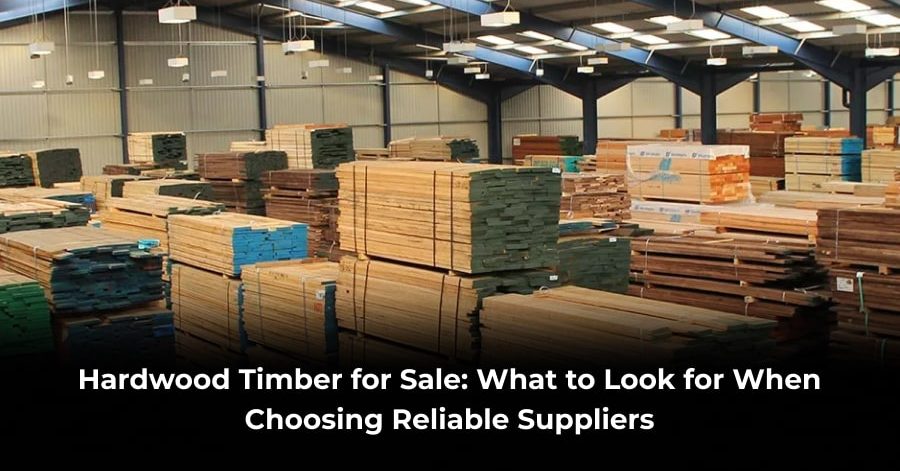Introduction
When it comes to building something durable, elegant, and long-lasting, the material you choose matters more than anything else. Among the many types of building materials available today, hardwood timber remains a favorite across industries—from furniture manufacturing to architectural design and structural applications. However, sourcing the right hardwood timber for sale is not just about finding any supplier; it’s about finding the right one.
Whether you’re a contractor, woodworker, architect, or even a DIY enthusiast, understanding what makes timber high quality and knowing how to choose the best hardwood timber suppliers will save you time, money, and frustration. In this blog, we’ll explore what makes hardwood valuable, what to look for in a supplier, and how to navigate the timber market with confidence.
Why Hardwood Timber Is in Demand
Hardwood comes from deciduous trees—species that shed their leaves annually—such as oak, maple, walnut, teak, and mahogany. Unlike softwood, which grows quickly and is less dense, hardwoods are known for their strength, resistance to wear, and fine finishes.
Key Benefits:
- Durability: Perfect for structural support and long-term installations
- Aesthetics: Rich colors and grains offer superior visual appeal
- Versatility: Used in flooring, cabinetry, furniture, doors, and even musical instruments
- Low Maintenance: Many hardwoods are naturally resistant to pests and decay
These qualities explain the rising demand for hardwood timber for sale across construction, interior design, and furniture sectors.
Factors That Affect Hardwood Timber Quality
Before you begin sourcing timber, it’s crucial to understand the variables that affect its quality. Even if you find an appealing price, the timber must meet specific performance and appearance standards.
Consider:
- Species: Some hardwoods like teak or oak are more resistant and visually striking than others.
- Moisture Content: Kiln-dried wood is preferred for most uses as it reduces the risk of warping or cracking.
- Grading: Wood is graded based on its appearance and structural integrity. The fewer knots and defects, the higher the grade.
- Cut Type: Flat-sawn, quarter-sawn, and rift-sawn cuts affect both the look and stability of the wood.
- Origin: Timber sourced from sustainable forests adds ethical value and may perform better in specific climates.
Quality starts from the tree itself and ends with how the timber is processed and stored—something only experienced hardwood timber suppliers can consistently guarantee.
How to Choose the Right Hardwood Timber Suppliers
Finding reliable hardwood timber suppliers is arguably the most important part of your buying journey. The right supplier won’t just deliver wood—they’ll provide the knowledge, certifications, and service you need to complete your project confidently.
1. Experience and Reputation
A supplier with years (or decades) of experience is more likely to offer consistent quality and service. Look for testimonials, reviews, or industry recommendations.
2. Product Range
A good supplier will offer a variety of timber species, grades, and dimensions. Whether you need rough-sawn lumber or pre-cut panels, your supplier should have the capacity to meet your needs.
3. Certifications and Sustainability
Check if the timber is FSC- or PEFC-certified. Sustainable hardwood timber for sale ensures responsible forest management and helps you meet environmental compliance, especially in large commercial projects.
4. Processing Capabilities
Some suppliers also offer value-added services like cutting, planing, or custom sizing. This is especially useful for bulk buyers or customized builds.
5. Consistent Stock and Lead Time
Delays in material delivery can disrupt project timelines. Always ask about availability and average lead times before placing an order.
Common Types of Hardwood Available in the Market
Here’s a breakdown of popular hardwoods you’ll commonly find when browsing hardwood timber for sale:
| Timber Type | Best Used For | Notable Traits |
| Oak | Flooring, Furniture, Beams | Dense, durable, elegant grain |
| Teak | Outdoor furniture, Marine applications | Water-resistant, naturally oily |
| Walnut | Luxury furniture, Decorative panels | Rich color, straight grain |
| Maple | Cabinets, Kitchen surfaces | Light color, shock-resistant |
| Mahogany | Doors, High-end furniture | Deep red hue, rot-resistant |
Knowing what each type is best suited for will help you work more efficiently with your hardwood timber suppliers and select materials aligned with your project goals.
Red Flags When Dealing with Suppliers
Not all suppliers are created equal. Here are some warning signs to watch out for:
- Lack of Transparency: If they avoid answering questions about origin or grade, that’s a red flag.
- Inconsistent Stock: Irregular availability can delay your projects.
- No Warranty or Return Policy: You should be able to return defective or misrepresented products.
- Poor Packaging or Transport Options: Especially if you’re importing timber, how it’s packed matters.
Reliable hardwood timber suppliers are clear, communicative, and consistent.
Pricing Tips: What Should You Expect?
Prices for hardwood vary depending on the species, grade, size, and region. Here’s an approximate pricing guide:
| Timber Type | Price Range (per cubic meter) |
| Oak | $800 – $1,500 |
| Teak | $1,200 – $2,500 |
| Walnut | $1,000 – $2,000 |
| Mahogany | $900 – $1,800 |
| Maple | $700 – $1,200 |
When reviewing hardwood timber for sale, don’t just focus on cost. Ask for a full breakdown
including shipping, taxes, and any customization services.
Why Sustainable Timber Matters
More consumers and businesses are prioritizing ethical sourcing. Choosing hardwood timber suppliers that provide sustainably harvested products helps combat illegal logging, supports local communities, and aligns with global green building practices.
Ask your supplier:
- Is this timber FSC-certified?
- Do you track the origin of the wood?
- Are you compliant with international export laws?
By supporting sustainable practices, you’re contributing to a more responsible and ethical supply chain.
Final Checklist Before Buying Hardwood Timber
- ✅ Have you selected the right wood species for your project?
- ✅ Are you working with certified and experienced hardwood timber suppliers?
- ✅ Have you checked the grading, moisture level, and cut type?
- ✅ Did you get a complete price quote with delivery, tax, and packaging?
- ✅ Are you clear on lead times and stock availability?
Answering “yes” to all of the above ensures a smooth, successful purchase.Conclusion
High-quality hardwood timber for sale isn’t just about finding the right product—it’s about building a relationship with trustworthy hardwood timber suppliers who understand your needs. From the forest to your job site, every step of the process matters.
When you choose well-graded, responsibly sourced, and properly processed hardwood, your projects won’t just meet standards—they’ll exceed expectations. Whether you’re building a home, outfitting a hotel, or crafting custom furniture, make sure your timber lives up to your vision.






